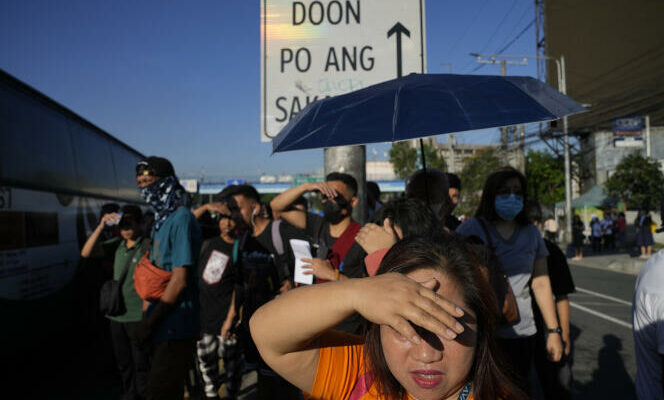For the second year in a row, Southeast Asia is sweating profusely: the month of April, which coincides in most countries in the region with the hottest and driest season of the year reached extreme temperatures – without, however, at this stage, exceeding the historical records of 2023. Songkran, the Buddhist festival of water, on April 13 in Thailand (called “Thingyan” in Burma), which marks the arrival of the monsoon and the new year, nothing has changed: the Thai meteorological department has warned that fifteen provinces of the country will be affected by a “dangerous temperature index” at least until April 28, with peaks of 43°C in some parts of the country. In addition to the heat, the burning caused air pollution indices to skyrocket in the drier North.
In neighboring Burma, where the civil war is intensifying, the heat wave pushed the junta to move, on April 17, former State Counselor Aung San Suu Kyi from the dilapidated building built for her in a special section of the Naypyidaw prison to a ” surviving residence “ due to the heat and his age (78 years old). The former leader, arrested on the day of the coup which overthrew her elected government on 1er February 2021, serving a sentence of twenty-seven years. She had refused to have air conditioning installed in her Naypyidaw prison, asking to be housed in the same way as other prisoners. The temperature exceeded 40°C in mid-April in the Burmese capital.
The heat is a double punishment for civilians in Burma: the intensification of fighting is leading the inhabitants of entire towns to leave their homes to settle outside, in makeshift camps: at least 2.6 million people are “internally displaced” in this country of 55 million inhabitants, according to the United Nations Office for the Coordination of Humanitarian Affairs. And 18.6 million people are considered to be in need of humanitarian aid – otherwise distributed in dribs and drabs due to lack of access.
However, in most of the regions affected by the fighting, or “liberated” by the resistance, the electricity supply is non-existent, and the population has to resort to generators, used intermittently due to fuel shortages. The temperature, in recent days, has fluctuated between 37°C and 39°C during the day. This is particularly the case in Myawaddy, the large Burmese town of 50,000 inhabitants on the Thai border, which fell during the week of April 8 into the hands of the armed resistance: it has, for several days, been subjected to bombings by the Burmese army. Several thousand residents have already taken refuge on the Thai side, where they are welcomed in shelters along the river which separates the two countries and which serve to protect livestock from the sun.
You have 36.89% of this article left to read. The rest is reserved for subscribers.
